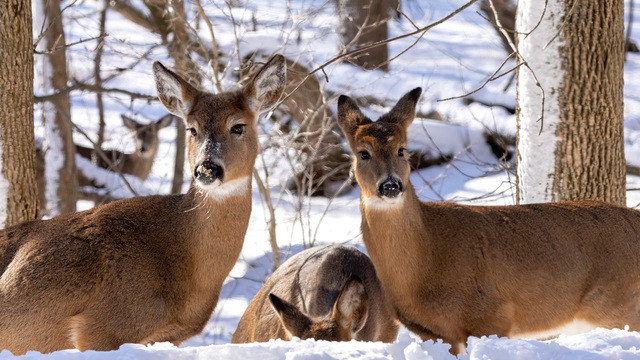We are talking about three variants of COVID-19 that have been identified in white-tailed deer in northeast Ohio. There are fears that the infection has a natural focus in North America. The study is published in the prestigious journal Nature.
 1526
1526
COVID-19 has been found in North American deer before. The previous outbreak was in Iowa. Coronavirus is transmitted to animals from humans, and deer also successfully infect each other. And if earlier only antibodies and fragments of the virus were found in deer, now tests have shown the presence of the virus itself.
The virus appeared in deer in January-March 2021, even before the appearance of the omicron and delta strains – this can be seen from the genetic diversity of the strains. Now scientists are investigating whether there are other variants of COVID-19 among deer than the original one, which is almost non-existent in humans. It is also not yet known how deer carry the disease and whether other animal species can infect
Scientists fear that if white-tailed deer become a natural reservoir of SARS-CoV-2, this carries risks for other animals and humans, because the virus can mutate and begin to circulate in the ecosystem, and with the advent of new strains, be transmitted back to humans, and we will get a new unpredictable round pandemic.
At the same time, even if the virus does not mutate, this can create a problem. If humanity loses immunity to the old strains that circulate in deer, then we are in for a surprise from 2020: the old version of COVID-19.
The highest prevalence of coronavirus among deer was in those habitats that border on settlements. Up to 70% of the examined animals were infected there. In places farthest from humans, COVID-19 was found in 13.5% of deer. To find out, scientists had to take swabs from the noses of hundreds of elk, and do PCR tests. In total, 35.8% of them tested positive.
It is not yet known exactly how the deer became infected with the coronavirus. The research team speculated that the infection could have been transmitted through contaminated water. The fact is that the virus is excreted in human feces, it can be found in sewage.
Back in 2020, millions of minks on fur farms had to be killed and destroyed in Denmark. Valuable fur of infected fur animals was banned. Then only 12 people were infected with “mink COVID-19”, but this forced the Danish government to resort to drastic measures that endangered the entire fur industry of the country.
Our pets: cats and dogs can also become infected with COVID-19. A study in the Netherlands showed that 22% of infected pet owners also had a positive PCR. A similar Canadian study showed that about half of cats and dogs can be infected.
A veterinary vaccine against coronavirus for pets has already been created in Russia. Vaccination “Karnivak-Kov” promises 100% protection of pets from the disease. True, it is primarily recommended to fur farms.
